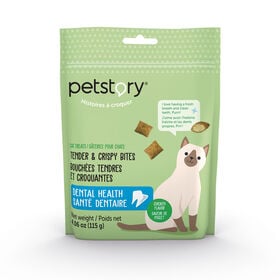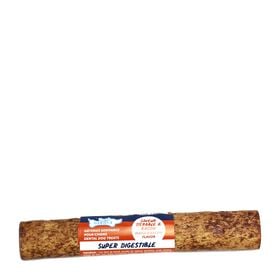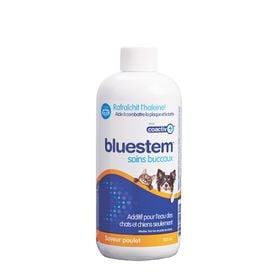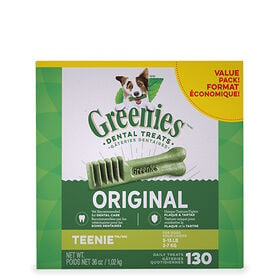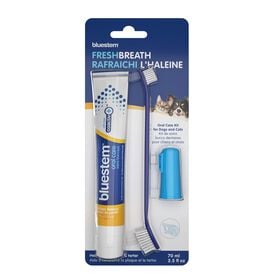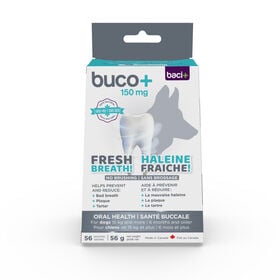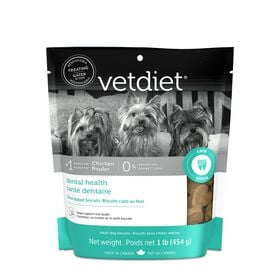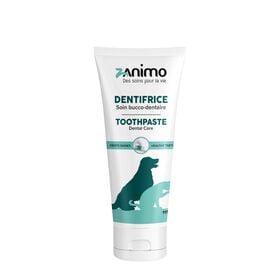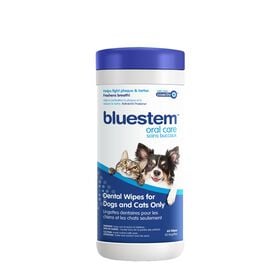Contents
Oral problems affect most pets and can lead to periodontal disease. Since the warning signs are often subtle, you need to be vigilant. Here's everything you need to know about your cat or dog's dental hygiene.
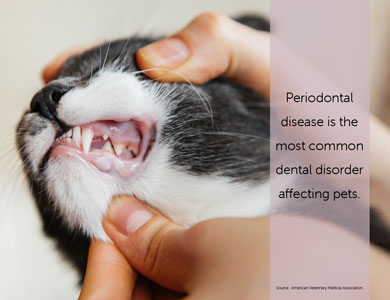
Plaque and tartar formation
Dental hygiene is crucial for pets and involves understanding how plaque and tartar form, which can cause dental issues in cats and dogs.
Plaque: the invisible enemy
Pets' teeth are susceptible to plaque formation, a sticky and colourless film of bacteria, saliva, and food particles. This plaque tends to accumulate on the surface of teeth and under the gums, providing an ideal environment for bacterial growth. It can be quite challenging to detect with the naked eye, as it blends in with the colour of the teeth. If not removed regularly, the plaque can harden and become a more severe tartar issue, which can cause bad breath, gum disease, and tooth decay.
Tartar build-up
If plaque is not removed from their teeth by regular brushing, it can harden into tartar. Tartar is an accumulation of minerals from saliva that plaque deposits. It accumulates in crusts that eventually cover a large portion of the tooth. It takes on a yellow or brown hue, making it visible.
Tartar is not just a cosmetic issue. It can cause severe problems such as gingivitis, periodontal disease, and even tooth loss. Additionally, the bacteria present in tartar can enter the bloodstream, affecting other organs like the heart and kidneys.
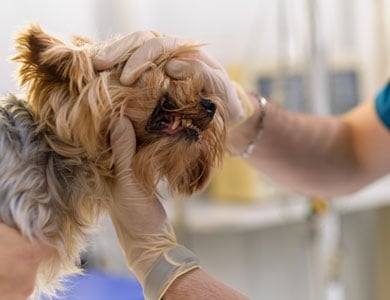
Prone to tartar
Certain dog breeds are more susceptible to developing tartar build-up on their teeth and require special attention. For instance, Yorkshire Terriers often develop periodontal disease at a young age. In general, smaller dog breeds are more prone to this issue than larger breeds.
Some dogs and cats also have more delicate teeth and a dental structure that favors tartar deposits. Animals with retained teeth (baby teeth that have not fallen out), crooked teeth (such as brachycephalic dogs), or malocclusion problems that prevent them from chewing their food properly are more likely to develop tartar.
Signs of dental problems
Maintaining constant vigilance for signs of dental problems is essential for your pet's overall health. Early recognition of these signals enables rapid intervention, preventing serious complications.
Symptoms to watch out for
Bad breath
: persistent and unpleasant breath could signal dental issues such as plaque or tartar.Change in eating habits
: if your pet is reluctant to eat, chews on one side of the mouth, or refuses food, this might indicate dental pain.Excessive salivation
: too much drooling can indicate dental pain or eating difficulties.Red or swollen gums
: inflamed gums may indicate gingivitis or periodontal disease.Loose or missing teeth
: tooth loss or teeth that appear open require immediate attention.
Possible consequences
Taking dental problems in pets seriously is essential, as ignoring them can have serious health consequences. Here are some of the possible outcomes.
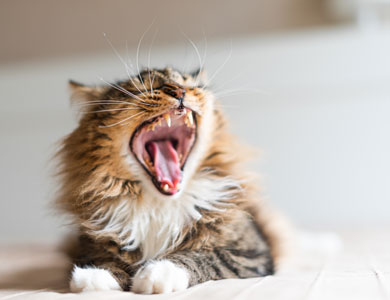
Pain and discomfort
: dental problems can cause constant pain, affecting your pet's well-being.Infections buccales
: infections can spread to the gums, jaw and other organs, hurting overall health.Tooth loss
: untreated dental problems can lead to tooth loss, affecting your pet's eating ability.Impact on quality of life
: constant pain and chewing problems can reduce your pet's quality of life.Increased care costs
: ignoring dental problems can lead to more costly treatments in the long term.Risk of secondary conditions
: untreated dental problems can contribute to broader health problems, such as systemic infections.
It is crucial to remain vigilant and take preventive dental care measures to maintain your pet's dental health.
Preventing plaque and tartar formation
Good dental hygiene is essential to prevent plaque and tartar buildup in your pet's teeth. Here are some practical tips to help:
Regular teeth brushing
: use a toothbrush specifically designed for pets and an appropriate toothpaste. Start gradually to get your pet accustomed to the process.Special food and treats
: choose dental food and treats that are designed to prevent plaque buildup and encourage chewing.Dental toys
: provide your pet with chew toys that help clean their teeth and remove food residues mechanically, reducing plaque buildup.Regular veterinary check-ups
: regular professional dental cleanings are crucial to removing accumulated tartar.
Understanding how plaque and tartar form is the first step towards effective dental care. By taking preventive measures, you're not only helping to keep your pet's smile bright, but you're also ensuring its overall health.
Also read: Your dog's dental health: essential care strategies
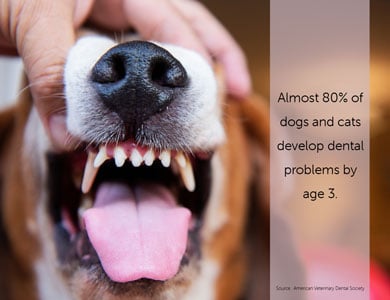
Tooth brushing: a practical guide
Regularly brushing your pet's teeth is crucial for maintaining their dental hygiene. However, getting them accustomed to this practice can be difficult, especially if they're not used to it. Here is a practical guide to make the process more efficient and less stressful.
Choice of equipment
: using a toothbrush designed specifically for pets is best. These toothbrushes have soft bristles that are gentle on your pet's gums.Toothpaste
: always use toothpaste formulated for pets. Human toothpaste can contain harmful ingredients that are not safe for animals. So, it's essential to choose products that are specifically designed for pets' dental needs.Gradual introduction
: gradually introduce brushing to familiarize your pet with the process. Start by gently touching their teeth with your finger to get them used to the sensation.Recommended frequency
: brush your pet's teeth daily if possible. If not, try to brush at least three times a week. Consistency is the key to maintaining good dental health.Brushing technique
: use a gentle technique while brushing and pay particular attention to the gum line. Brush in a circular motion to effectively remove plaque.Post-brushing rewards
: reward your pet after each brushing session. This reinforces a positive association with the practice and makes the process easier in the long term.
Breed-specific needs
Understanding that every breed has unique dental characteristics and needs is important. By tailoring dental care to meet those specific needs, we can ensure a personalized approach for our pets.
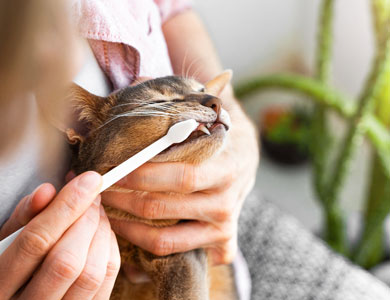
Small breeds
: small breeds tend to have tighter teeth, so it's better to use small toothbrushes to reach the spaces between the teeth.Large breeds
: large breeds may be more prone to tartar build-up, so it's recommended to offer them larger and stronger chew toys to stimulate chewing and prevent tartar formation.Breeds prone to dental problems
: some breeds, such as Bulldogs and Persians, are more susceptible to dental problems. Thus, they require more frequent veterinary visits and dental care as a preventative measure.Breed-specific recommendations
: it's always a good idea to consult your vet for breed-specific advice on dental hygiene. They will be able to guide you on the best practices to maintain good dental hygiene for your pet.
By adapting your brushing and dental care practices to your pet's specific needs, you can maximize the effectiveness of your efforts in keeping their teeth healthy.
Food and treats for dental health
Now that we have discussed the specific needs of different breeds, let's shift our focus to a proactive approach by choosing food and treats specially designed to promote optimal dental health in your pet.
Their diet significantly influences your cat or dog's dental health. Making informed food choices can help prevent the accumulation of plaque and tartar and promote healthy teeth and gums.
Selecting beneficial foods
Dental kibbles
: consider choosing kibbles formulated explicitly for dental health. These kibbles can help reduce plaque and tartar buildup while your pet chews.Nutrient-rich food
: choose foods rich in essential nutrients, such as calcium and vitamin D, for optimal dental health.
Also read: Switching your pet's diet: steps to a successful transition
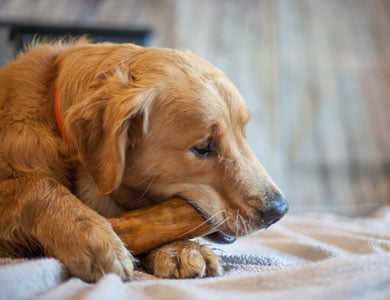
Recommended treat options
Natural dental bones
: Natural bones can help clean teeth naturally and provide your pet with chewing pleasure. However, it is important to note that they must be given raw and never cooked. Also, natural bones can pose certain health risks to your pet. Therefore, it is highly recommended to consult your veterinarian before offering them to your cat or dog.Dental toys
: you can choose toys specifically designed to promote dental health. Rubber or nylon chew toys are great options that can help prevent plaque buildup.Dental Treats
: these treats often have a texture that helps clean teeth while rewarding your pet.Chew foods
: including foods your pet can chew on, such as carrots or apples, can also help maintain their dental health. Chewing these foods can help clean teeth naturally.
Integration into a daily routine
Integrating certain foods and treats into your pet's daily routine is essential to maintain dental health. Consistency is key, so offer these items regularly and ensure your pet maintains a healthy diet. It's also important to monitor your pet's reaction to the new food, and if any signs of discomfort or allergic reaction appear, consult your veterinarian immediately.
It's worth noting that while these food options and treats can help maintain good dental health, they are not a substitute for regular tooth brushing. By incorporating these food choices and treats into your pet's daily routine, you actively contribute to the prevention of plaque and tartar buildup and reinforce the foundation of optimal dental hygiene.
Alternatives to brushing
Maintaining dental hygiene for pets can be challenging, especially if they are not accustomed to teeth brushing. However, there are practical and effective alternatives available.
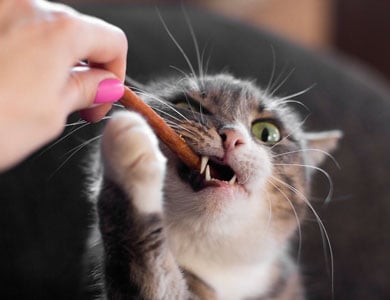
Dental chew toys
Opt for chew toys specially designed to promote dental health. These toys have texture that helps naturally clean teeth while providing a stimulating activity for your pet.
Water additives
Oral wipes for pets
Special animal mouth wipes are available to wipe teeth and gums gently. They are particularly effective with small dogs and cats. While this is not a replacement for brushing, it is a helpful option when complete brushing is impossible.
Integrating these alternatives into your pet's daily routine allows you to maintain good dental hygiene even when brushing is not always possible.
Also read: Your cat's dental health: essential care strategies
Common mistakes to avoid
Although the desire to take care of your pet's dental health is commendable, some common mistakes can compromise the efforts' effectiveness. Avoiding these mistakes will help maintain a more effective dental care routine.
Using human toothpaste
: never use toothpaste intended for humans. They may contain ingredients that are harmful to animals if ingested. Instead, opt for toothpaste formulated explicitly for animals.Ignoring signs of dental problems
: don't underestimate the importance of signs such as bad breath, changes in eating habits or inflamed gums. Ignoring these symptoms can lead to severe complications.Improper brushing frequency
: make sure you follow a regular brushing frequency. Occasional brushing does not provide sufficient protection against plaque and tartar.Neglecting professional care
: brushing at home is important, but don't neglect professional care. Regular dental cleanings at the veterinarian are essential to remove tartar buildup.Not giving appropriate chew toys
: avoid giving your pet very hard items to chew on, such as cooked bones. These items can damage gums and teeth, even causing tooth fractures.Neglecting total oral care
: dental care is not limited to brushing. Be sure to factor diet, treats, and alternatives to brushing into your overall approach.Ignoring vet's advice
: follow them carefully if your vet recommends specific care or dental treatments. Your vet has extensive knowledge of your pet's dental health.Waiting too long before the first brushing
: start teeth brushing as soon as possible. Waiting too long can make your pet less cooperative and worsen dental problems.Aggressive brushing
: be gentle when brushing. Aggressive brushing can cause injury and make the experience unpleasant for your pet.
By avoiding these common mistakes, you will help maintain optimal dental care for your pet.
Also reas: How to keep your pet's eyes, ears and truffle clean
Professional dental cleanings
In addition to at-home care, professional dental cleanings are crucial in maintaining good dental hygiene for your pet.
Recommended frequency
: schedule regular professional dental cleanings at your veterinarian. The frequency depends on your pet's individual needs, but generally, once a year is recommended.Tartar removal
: Professional cleanings remove accumulated tartar, which is often challenging to manage with brushing at home.Comprehensive dental exams
: cleanings also allow the veterinarian to perform thorough dental exams, allowing for early detection of potential problems.
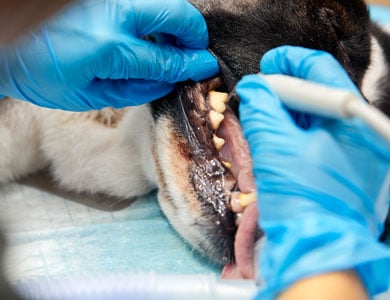
Scaling and polishing
Scaling is a routine procedure commonly performed in veterinary clinics, similar to an annual visit to the dentist. However, general anaesthesia is required since the animal needs to remain still during the dental treatment. Basic blood tests are carried out beforehand to ensure that the anaesthesia does not pose any risk to your pet.
Despite being under anaesthesia, your animal can typically go home the same day. During the initial dental examination, the veterinarian assesses the condition of your animal's teeth and gums and identifies any possible lesions. If the only issue is tartar buildup, the veterinarian will scale using ultrasound. They will then use a small, vibrating device to remove the tartar crusts and polish the teeth to make them smooth and protected against future deposits. It is important to note that the more porous the tooth, the more bacteria can stick to it.
If any lesions are suspected, dental X-rays are taken to confirm potential problems such as decay, tooth fractures, abscesses, exposed pulp, etc. Rapid treatment or tooth extraction may then be necessary to prevent pain and complications.
It is crucial to emphasize that only veterinarians can perform dental care. Attempting to perform dental cleanings at home or with an unqualified individual can damage the enamel and cause more tartar problems.
Finally, by combining home care, professional dental cleanings, and appropriate accessories, you can provide your pet with a comprehensive approach to ensure excellent dental hygiene!
This article was reviewed by Dr. Valérie Trudel, veterinarian and member of CABEA Mondou.


